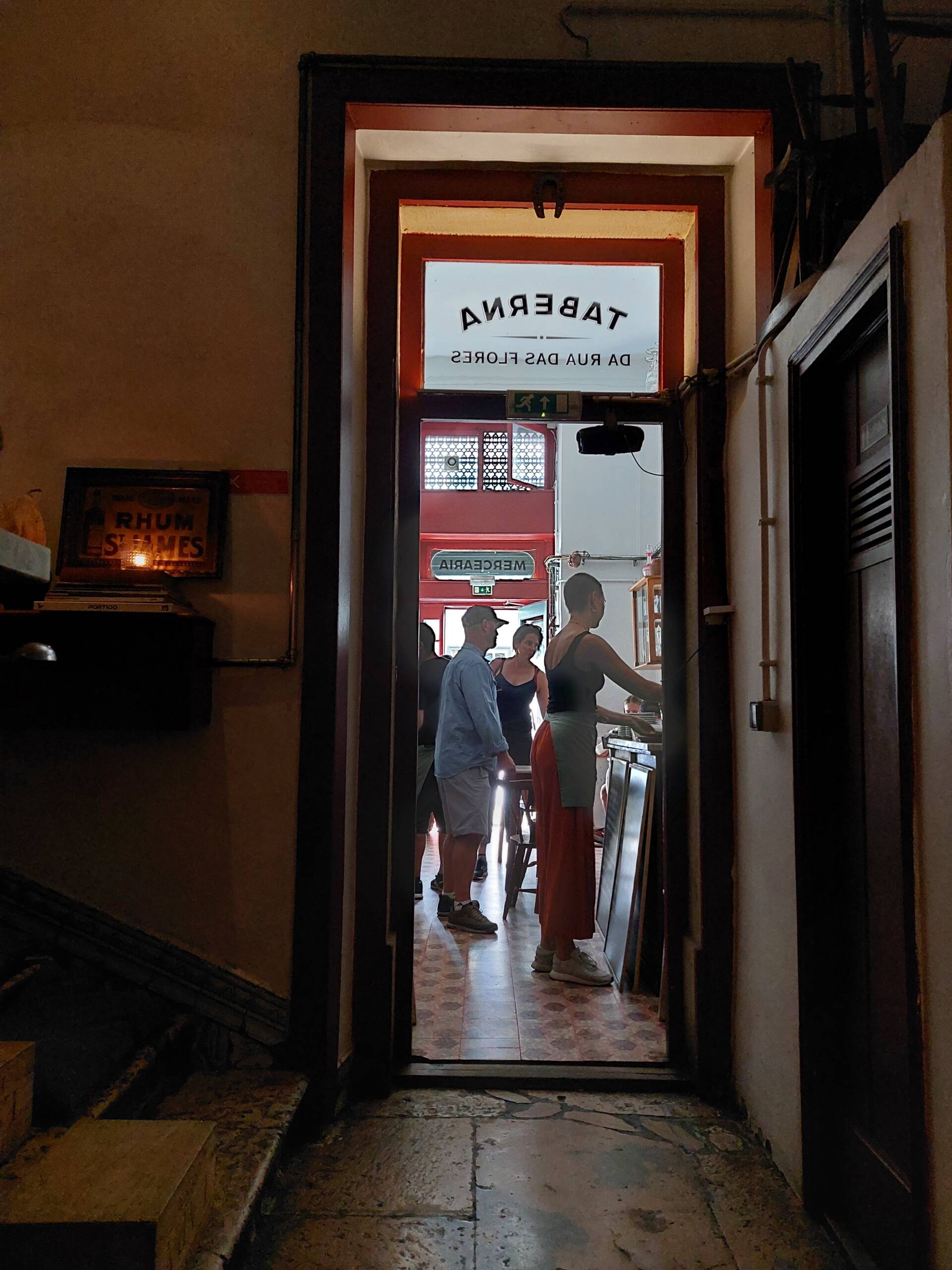Some travel photographs don’t show you the grand monuments or sweeping vistas but instead capture a fragment, a sliver of everyday life that feels like slipping behind the curtain of a city. This image is exactly that—a view framed by a doorway, looking from shadow into light, from quiet into chatter. The old tiled floor leads your eyes straight toward the heart of the scene: a small group of people standing at the counter of a tavern, absorbed in the rhythm of ordering, paying, waiting. You can almost hear the scrape of chairs on tiles, the hum of low voices, the occasional clink of glass.

What makes it beautiful is its honesty. There’s nothing polished here. The narrow stone steps to the left are worn down by countless feet, and the cracked doorway frames the view like an accidental stage. The tavern’s name, reversed on the glass above the door—Taberna da Rua das Flores—tells you that this is not a place designed to lure tourists with neon promises, but a neighborhood fixture, part of the fabric of the street. The people in line aren’t posing; they’re just deciding between a sandwich, a plate of petiscos, or maybe a glass of vinho verde.
Standing in the shadowed corridor, you become both observer and participant. There’s an intimacy in watching from this perspective, as if you’ve been let in on a secret, allowed to see a city not from the outside but from its working core. It’s the sort of place where the food might arrive in simple dishes, where the atmosphere is heavier with memory than design, where stories are exchanged more easily than receipts.
This is why wandering side streets and following your nose matters more than ticking off guidebook lists. A city reveals its soul not in the monuments but in doorways like this, where locals gather for their midday meal, where travelers slip in unnoticed and, for a moment, belong. If you ever find yourself on Rua das Flores, don’t rush past—pause, look through the doorway, and step inside. That’s where the city lives.
Leave a Reply